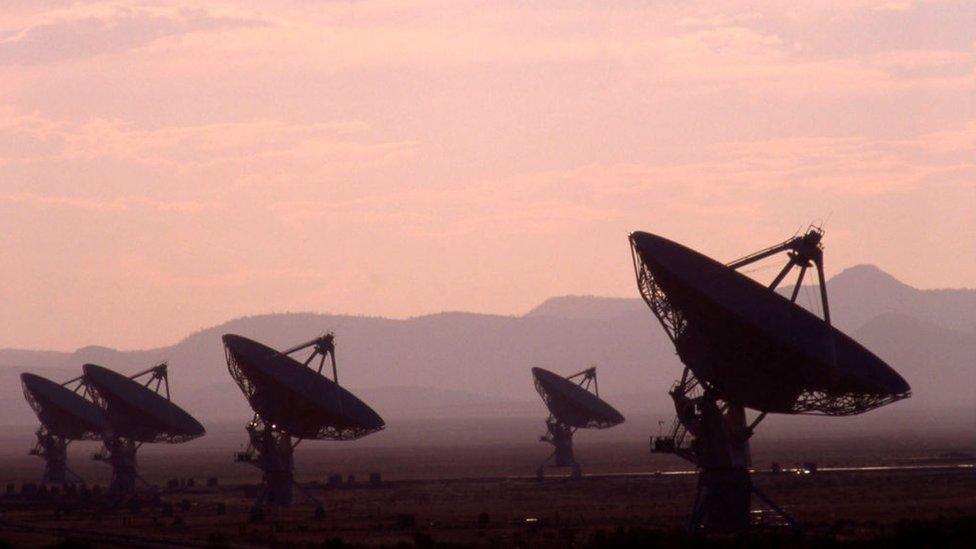Pentagon to study UFO sightings in restricted US airspace
- Published

US defence officials have announced the launch of a task force to investigate reports of unidentified flying objects in restricted airspace.
The group will assess objects of interest and "mitigate any associated threats", the Pentagon said on Tuesday.
A highly anticipated military report in June failed to explain dozens of reported UFO sightings and warned of possible national security risks.
The new group will be overseen by top military and intelligence leaders.
The Airborne Object Identification and Management Synchronization Group will "detect, identify and attribute objects of interest in [special use airspace]", Deputy Defence Secretary Kathleen Hicks said in a memo to senior Pentagon leadership on Tuesday.
Their directives include reducing gaps in intelligence detection capabilities, analysing intelligence and counterintelligence data, and recommending policy in the area.
The defence department has said it takes any reports of aerial incursions - identified or unidentified - "very seriously, and investigates each one".
Tuesday's statement acknowledges challenges highlighted by a Pentagon report to Congress in June.
Lawmakers had demanded the report after the US military reported numerous instances of unidentified objects seen moving erratically in the sky.
It said of 144 reports made about the phenomena since 2004, they could not explain all but one. While the Pentagon said there were "no clear indications" of any otherworldly activity, it did not rule out the possibility that the objects were extra-terrestrial.
Several possible explanations were offered at the time, including advanced technologies from another nation like China or Russia, natural atmospheric phenomena - like ice crystals - that could register on radar systems, and "developments and classified programmes by US entities".
The one case identified "with high confidence" was deemed to be a "a large, deflating balloon".
UFO report: Do Americans believe something's out there?
Related topics
- Published25 June 2021

- Published25 June 2021

- Published28 April 2020
